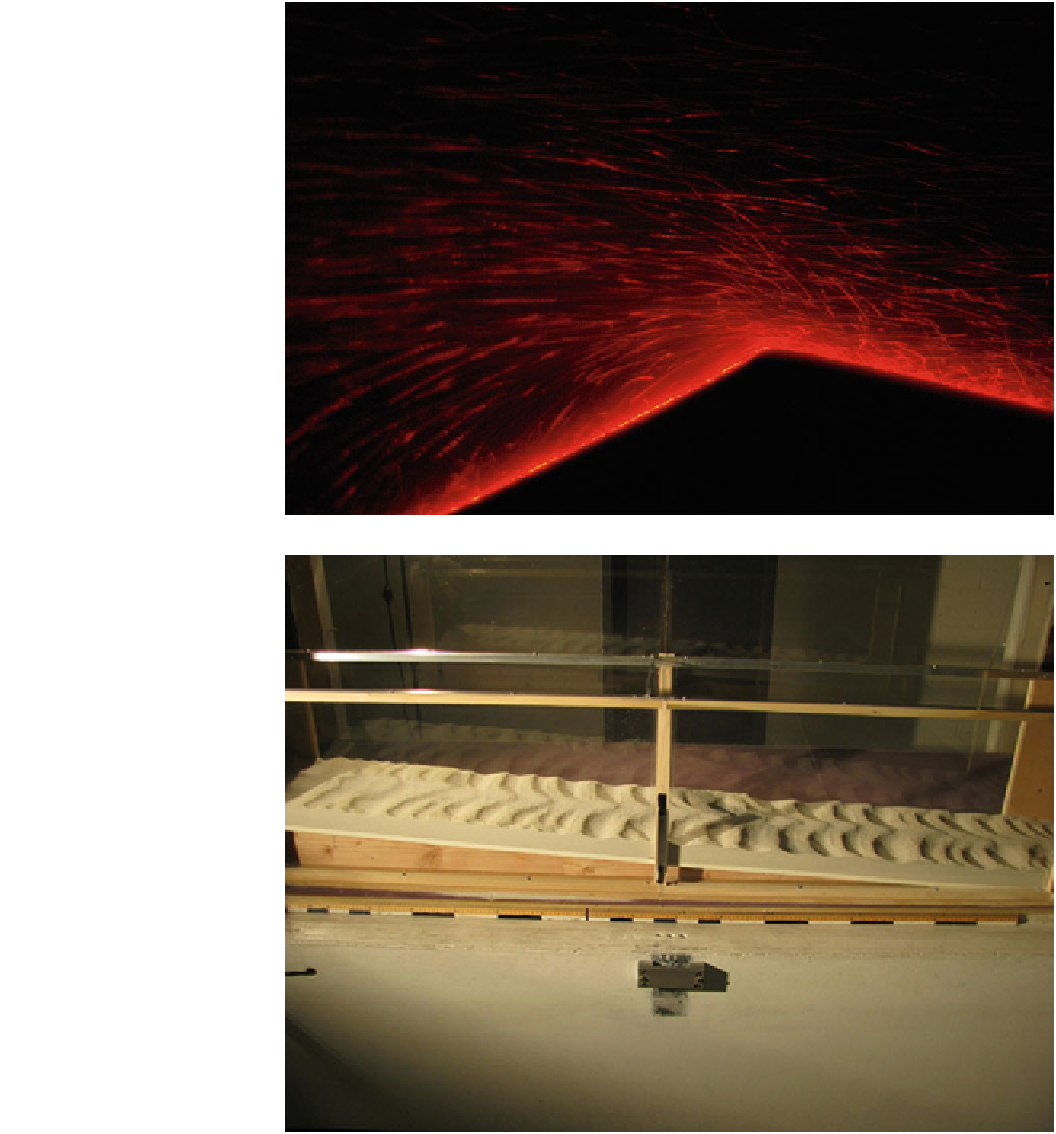Geoscience Reference
In-Depth Information
Fig. 17.4
As an example of the
close examination of transport
processes in wind pioneered by
Bagnold, this modern laser-
illuminated example shows
grains flying over the crest of a
ripple in the Trent University
tunnel. Note the slightly rounded
crest of the ripple. Image
courtesy of Cheryl McKenna-
Neumann
Fig. 17.5
Bedforms in a wind
tunnel at ASU. Here the
propagation of ripples up a slope
is being investigated (slope alters
the saltation threshold slightly, as
well as the saltation path relative
to the unrippled surface). The
ripples here are not linear, due to
the boundary layer of the
plexiglass walls of the tunnel.
Photo courtesy of Rob Sullivan
allowing investigators to run controlled experiments over
naturally-occurring desert surfaces. Such portable wind
tunnels of necessity tend to be considerably smaller than
most laboratory wind tunnels, so that great care must be
exerted to isolate the test section from any significant wall
effects (i.e., the build-up of a boundary layer associated with
each wall of the wind tunnel; e.g., see Fig.
17.5
), but this
has proved to be possible with many portable facilities.
Purpose-built wind tunnels (Fig.
17.6
) may incorporate
specific structures to control the boundary layer turbulence,
e.g., Fig.
17.7
.
In addition to the usual aerodynamic considerations for
wind tunnels, sediment transport tunnels must also grapple
with the challenges of the sediment itself, which obviously
moves. Thus sand may be introduced by some kind of
hopper or drizzling mechanism, and may accumulate in

Search WWH ::

Custom Search